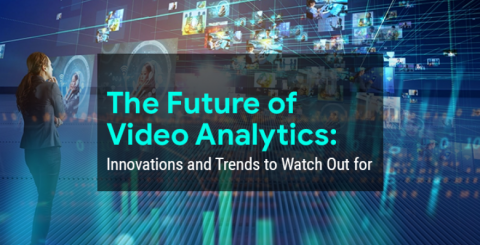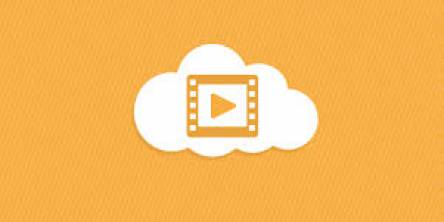The Future of Video Analytics: Innovations and Trends to Watch Out

The field of video analytics has advanced rapidly in recent years, fueled by breakthroughs in machine learning, deep learning, computer vision, storage, and cloud computing. These technologies have propelled video analytics from a niche security tool into a comprehensive intelligence platform with far-reaching implications for businesses.
As Video Analytics progresses, the future is filled with opportunity and innovation. New capabilities will enhance and scale video analytics to optimize operations, improve experiences, mitigate risks, and gain real-time visibility. At the same time, important questions about privacy, bias, data use, and ethics must be asked.
Current State of Video Analytics:-
The video analytics industry has advanced rapidly in recent years thanks to breakthroughs in machine learning, deep learning, computer vision, and cloud computing. These technologies have transformed video from static security footage into real-time intelligence that provides actionable insights and automated responses.
Object recognition capabilities now match or exceed human performance in controlled environments. Deep learning models have mastered face recognition, people counting, license plate reading, product identification, and beyond. They comprehensively view assets, ingress points, traffic flows, downtime, wait times, and critical metrics influencing customer experiences and operational efficiency.
Anomaly detection algorithms have advanced to detect subtle anomalies even in noisy, complex scenes with many moving parts. They can identify unusual loitering, missing objects, aggressive behaviour, policy violations, safety issues, fraud, and more based on statistical models of regular activity and traffic patterns. Real-time alerts provide instant feedback to take action and avoid incidents before they escalate.
Innovations in Video Analytics:-
Deep learning models are getting far better at recognizing objects, scenes, people, faces, vehicles, and activities in videos, even across multiple cameras. Some systems can now track thousands of objects simultaneously with near-perfect accuracy. Some of the innovations in video analytics are as follows-
Advanced Anomaly Detection-
New approaches enable the detection of even subtle anomalies in complex, busy scenes. Tracking changes in lighting, shadows, reflections, and object interactions over time can detect when something has been moved, added, or removed. Models that understand the relationships between different scene attributes can detect anomalies that humans would miss. Fewer false positives and faster, more accurate alerts on potentially dangerous events are on the horizon.
Deeper Insights and Predictive Analytics-
Analytics provide insight into customer experiences, staff performance, operations efficiency, sales trends, safety issues, and more. Predictive analytics using video data and other sensors can forecast future outcomes, optimize key metrics, anticipate problems, and recommend data-driven solutions. Prescriptive analytics will suggest the best courses of action to impact business goals based on predictive insights. Analytics combining multiple data streams will provide a holistic, 360-degree view of situations unfolding.
Increased Automation and Integration-
Video analytics can now trigger automated responses. It includes activating barriers, alerting staff, modifying lighting, routing patrols, messaging customers, etc. It is based on the analysis of live or recorded video feeds. It integrates analytics with additional systems like access control, sensors, POS data, CRM software, and robotics. It will enable even more sophisticated automated responses and intelligent agents over time. Automation promises to scale human oversight and intervention to new levels.
Implications and Opportunities for Businesses:-
Video analytics brings significant implications and opportunities for businesses across many areas of operations and management. Some of the critical ways analytics influences businesses include:
Optimized Security and Safety-
Analytics enhances security by detecting intruders, suspicious behaviours, policy violations, fraud, safety issues, and other threats. It is in real-time based on analysis of live or recorded footage. It facilitates rapid response to incidents and anticipates issues before they emerge through predictive prevention. Fewer security staff are needed to monitor feeds actively when analytics alerts them to only the most critical events requiring attention.
Improved Operational Efficiency-
Gains in efficiency are possible through optimized traffic and supply chain management. It also includes precise sensing and monitoring of assets, automated control of lighting schedules, temperature settings, and other facility management systems. It Is based on analysis of activity and occupancy and detection of inefficiencies enabling predictive optimization across many areas. Simplified reporting on critical metrics and proactive problem-solving also reduce time spent reactively troubleshooting inefficiencies and issues after they arise.
Challenges and Ethical Considerations
While video analytics substantially benefits businesses, it also introduces important challenges and ethical issues that require proactive management. Some of the primary considerations include:
Privacy Concerns:-
Privacy concerns emerge as more cameras capture footage and analytics enable the detection of obscure details in recordings. Policies must be strict, transparent, and communicated clearly to prevent unauthorized access, surveillance, data breaches, and misuse of information that can compromise privacy. Encryption, access controls, data minimization, and regular audits can help address concerns, but they do not eliminate risks, especially if employees or third parties obtain unauthorized access.
Bias and Unfairness:-
If algorithms and training data reflect and even amplify the biases of developers and stakeholders, analytics could produce unfair or prejudiced insights, recommendations, predictions, and determinations that negatively impact marginalized groups. Oversight and testing are needed to detect unwanted biases before they influence sensitive decisions, especially those impacting opportunities, resource allocation, security responses, and legal matters. Addressing biases is crucial to developing analytics that is equitable and just.
Limited Oversight:-
There is a risk of algorithms and automation overriding human oversight and judgment, limiting accountability for important decisions. It is particularly concerning for security, safety, legal and ethical issues. Provisions must be implemented to ensure analysts, managers, and stakeholders maintain appropriate control over and responsibility for the analytics systems and responses under their purview. Oversight cannot be delegated to technology alone.
Conclusion:-
While video analytics continues progressing rapidly, opportunities for innovation must be balanced with responsibility at each step. Emerging innovations point to even greater possibilities ahead. From improved object recognition and tracking at massive scales to advanced anomaly detection, predictive prevention, personalized recommendations, and real-time automation. Trends in video analytics are shaping its evolution into an unparalleled intelligence platform for visibility, optimization, and partnership between businesses and technology.
Similar Articles
Given that the live streaming market is expected to reach $224 billion by 2028 – trust us, you would want a part of this thriving industry!
Starting a successful YouTube channel can be a game-changer, offering a platform to share your passions, reach a global audience, and potentially generate income. However, launching a channel that stands out in the crowded YouTube space requires more than just uploading videos. It demands careful planning, strategic content creation, and consistent effort.
Most organizations search for a VMS framework to consider the limitations of using Video Analytics. It is an amazing medium to keep an eye on the false exercises, break down the adequacy of the framework, and produce astute information.
It is no surprise that video content is one of the most effective and impactful ways to convey your business message in the present digital marketing landscape. However, simply understanding this fact does not do you anything good! If you want to make the most out of these videos, you should know the ways to effectively use it.
It is not easy to sell a product. Especially in today’s market that’s oversaturated with goods and services provided to the customer by companies from all around the world. You need to stand out from the competition. How do you do that? By telling an engaging story about whatever you are selling
The best marketing needs to feel like marketing at all, but a set of apt communication and conversation. The tycoons of any business have reached the highest mark because of dogged hard work and smart application of several tactics, traditional or digital.
For most of the individuals around the world, watching movies and TV programs is one of the most well-known distractions. Watching films is fun particularly when you are having a chance to watch them at the solace of your home. This adds reward and greater amusement to your life.
Choosing the right company to make a video is essential for an explanatory video. Watch without delay the top 10 advertisers! Before now, you've probably identified that animated video explainers are an excellent investment for your business.
Video live streaming is, basically, the demonstration of transmitting live video recording over the web to an active gathering of people. Earlier, live streaming was normally done on dedicated live streaming platforms, however today; social media has extended the compass of live streaming to Facebook, Twitter, and Instagram.









